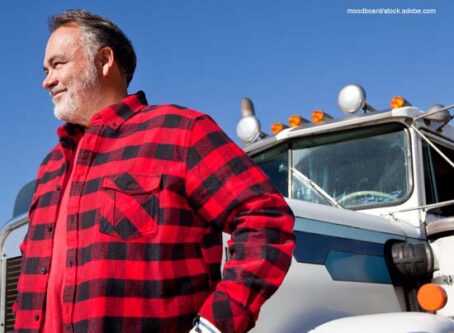Report highlights patchwork of autonomous truck policies
A new report analyzes the patchwork of state policies dealing with autonomous trucks, highlighting potential barriers and inconsistencies for the emerging technology.
On Wednesday, Nov. 8, the Intelligent Transportation Society of America and the Association for Uncrewed Vehicle Systems International released a report diving into the patchwork of state policies regulating autonomous trucks. The report highlights requirements around platooning, automated vehicles, automated trucking and general trucking provisions.
Crash reporting and data collection
One area where state policies vary greatly is crash reporting.
According to the report, about half of states require autonomous truck companies to immediately report any crash. Five states (Alabama, Oklahoma, North Dakota, Rhode Island and Virginia) require immediate reporting if the crash involves injury or death. In other states, reporting is required anywhere between within 12 hours (District of Columbia) and within 30 days (Missouri). Ohio requires crash reporting, but it states no specific timeframe.
Although there are numerous policies regarding crash reporting, most states do not require data recording for autonomous trucks. Similarly, most states do not have a policy that mentions sensors. California requires sensor information for “all vehicle functions” for 30 seconds leading into a collision.
Distance gaps
Mostly relevant to platooning operations, rules overseeing distance gaps between vehicles are inconsistent from state to state. For example, several states require trucks to keep a following distance of at least 300 feet. Meanwhile, New Jersey has a following distance of only 100 feet. Some states allow platooning vehicles to be exempt from distance gap requirements.
Driver requirements
An aspect of autonomous trucking that’s spurred criticism and concern is the diversity of requirements regarding the presence of a human driver.
According to the report, 15 states require a human driver to be in control of each vehicle in a platoon or convoy. However, many of those states do not require a human driver in a Level 4 autonomous truck.
In Arkansas, an autonomous truck’s steering control, systems monitoring and intervention must be in the control of its human operator. Illinois, conversely, does not require a human driver for high-level autonomous trucks. But it does require a human driver in the second vehicle “for the testing program’s duration.”
Driver training requirements also vary from state to state. Several states require autonomous truck test drivers to be properly trained. Connecticut simply requires a driver to be trained on the capabilities and limitations of the autonomous technology. Pennsylvania, on the other hand, is more detailed on its driver training requirements. It requires the following for any platoon operator training program:
- How the platooning system works
- Platoon operations, including communication and visual indicators, and platooning system disengagement and fallback
- Training on the safety measures that are in place in case of any disengagement, regardless of the reason for disengagement
- Driver engagement, including distracted driving avoidance, fatigue and wellness awareness, and drug and alcohol impairment awareness
- Continuing education requirement
The report analyzes numerous other state rules that can affect autonomous truck deployment, including maximum/minimum speeds, insurance requirements, move-over laws, toll plazas, work zones and Unified Carrier Registration Agreement, to name a few.
Labor groups raise concerns over patchwork of policies
The Intelligent Transportation Society of America’s report comes shortly after numerous transportation labor groups expressed concerns over the patchwork of policies overseeing driverless vehicles across the nation.
On Wednesday, Nov. 8, more than two dozen transportation labor groups issued a letter to the U.S. Department of Transportation and the National Highway Traffic Safety Administration, urging federal transportation officials to investigate driverless vehicle companies following a string of incidents involving the new technology.
In addition to a federal investigation, the coalition wants the federal government to install a “safety-focused federal automated vehicle framework.”
“It is past time that the DOT recognized the deep shortcomings of the current departmental (autonomous vehicle) policies and that they develop an updated, comprehensive, safety-focused framework for (automated driving systems),” the coalition states in the letter. “That framework must offer clear direction that the era of self-regulation by this industry is over to help combat the dangerous state-by-state patchwork of policies that has emerged in the absence of serious federal oversight.”
Trucking industry concerns over autonomous trucks
Several trucking industry stakeholders have expressed concerns over autonomous trucks and the policies that govern them.
In September, Cathy Chase, president of Advocates for Highway and Auto Safety, expressed her concerns at a House subcommittee hearing about autonomous trucks.
“The safety mishaps are substantial, and the consequences are alarming,” Chase told lawmakers. “While AVs for passengers and AV trucks are not the same, there are similarities and lessons to be learned from the ongoing San Francisco (program). The serious problems must not be replicated or magnified with trucks or transit vehicles, which are significantly larger and heavier, more complex to operate and can have devastating outcomes in crashes.”
The Owner-Operator Independent Drivers Association, which represents small-business truckers, wrote to the committee about problems involving autonomous trucks.
“First and foremost, truckers are concerned about safety – their own – as well as the driving public’s,” OOIDA wrote. “Despite unfounded forecasts and empty promises that automated vehicles will lead to zero deaths, there continue to be real-world situations in which automation has devastatingly failed … For truckers who must share the road with these vehicles to do their job, an accident caused by autonomous technology could put them out of business and cause serious injury or death. Unfortunately, current voluntary reporting requirements leave truckers and the public in the dark about the safety and reliability of autonomous technologies.” LL









